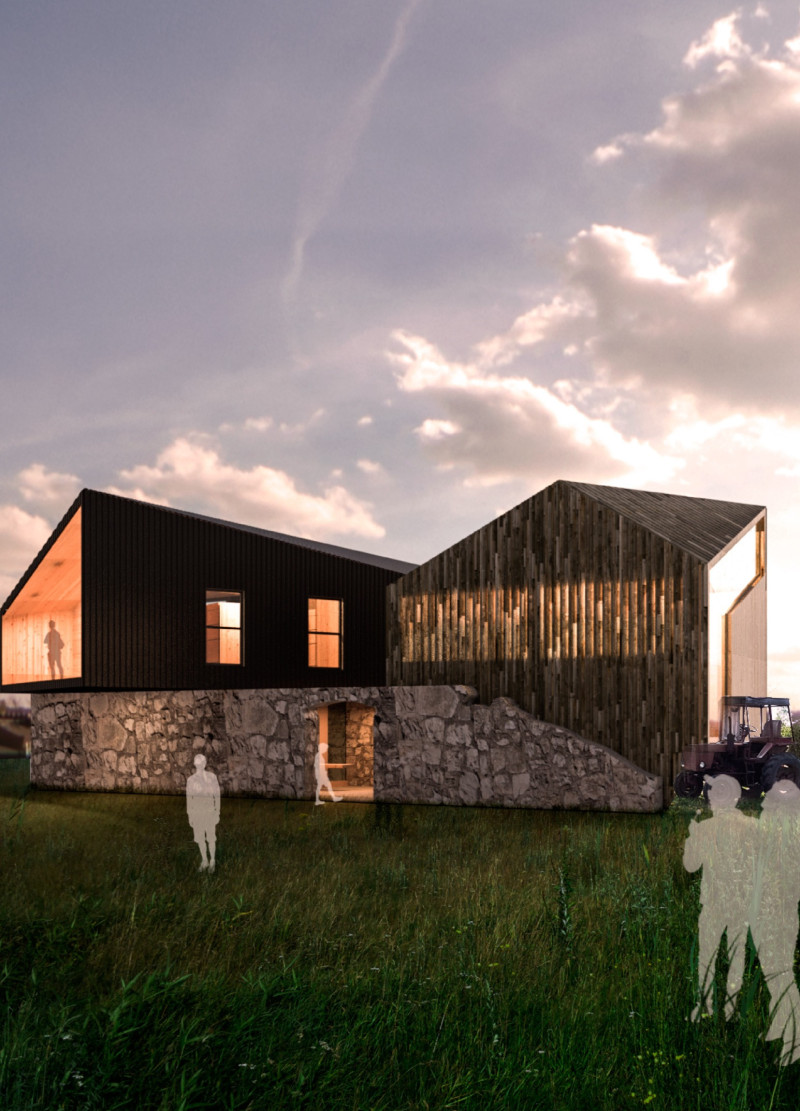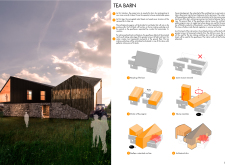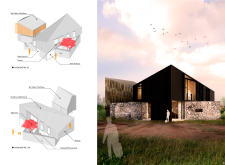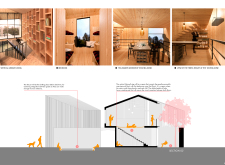5 key facts about this project
The project consists of distinct, interrelated components that enhance its functional efficiency. Central to the design is a large workshop space that includes dedicated areas for drying, tasting, and packaging tea. The drying area features a high ceiling to allow proper airflow, critical for the tea's processing. Adjacent to this, the tasting area is designed to provide an optimal sensory experience for tea enthusiasts. The packaging section is efficiently organized, incorporating gravity-driven systems for streamlined operations.
The guesthouse comprises multiple bedrooms that accommodate visitors, prioritizing comfort and intimacy. An inviting vertical library and living area serve as a central hub for social interaction among guests. This spatial configuration promotes a balance between private and communal experiences, fostering a sense of community.
Environmental sustainability is a cornerstone of the Tea Barn project. The architecture employs a rich material palette comprising corrugated metal sheets for roofing and cladding, locally sourced wood for interior warmth, and reclaimed stone from the original barn structure. This material selection not only enhances the aesthetic quality of the design but also supports ecological principles by minimizing waste.
One of the unique aspects of the Tea Barn project is its emphasis on bioclimatic design. The extensive use of glazing in strategically placed openings maximizes natural light and ventilation, reducing the need for artificial lighting and climate control. This approach enhances energy efficiency while ensuring that the building harmonizes with its surroundings. The integration of outdoor spaces within the central patio further promotes interactions among users, creating a collaborative atmosphere conducive to both work and leisure.
The Tea Barn project exemplifies modern architectural practices while addressing community needs and environmental challenges. To further explore the specifics of this design, readers are encouraged to examine the architectural plans, architectural sections, and other architectural designs associated with the project. Delving into these elements will provide deeper insights into the innovative ideas that underpin the Tea Barn.


























